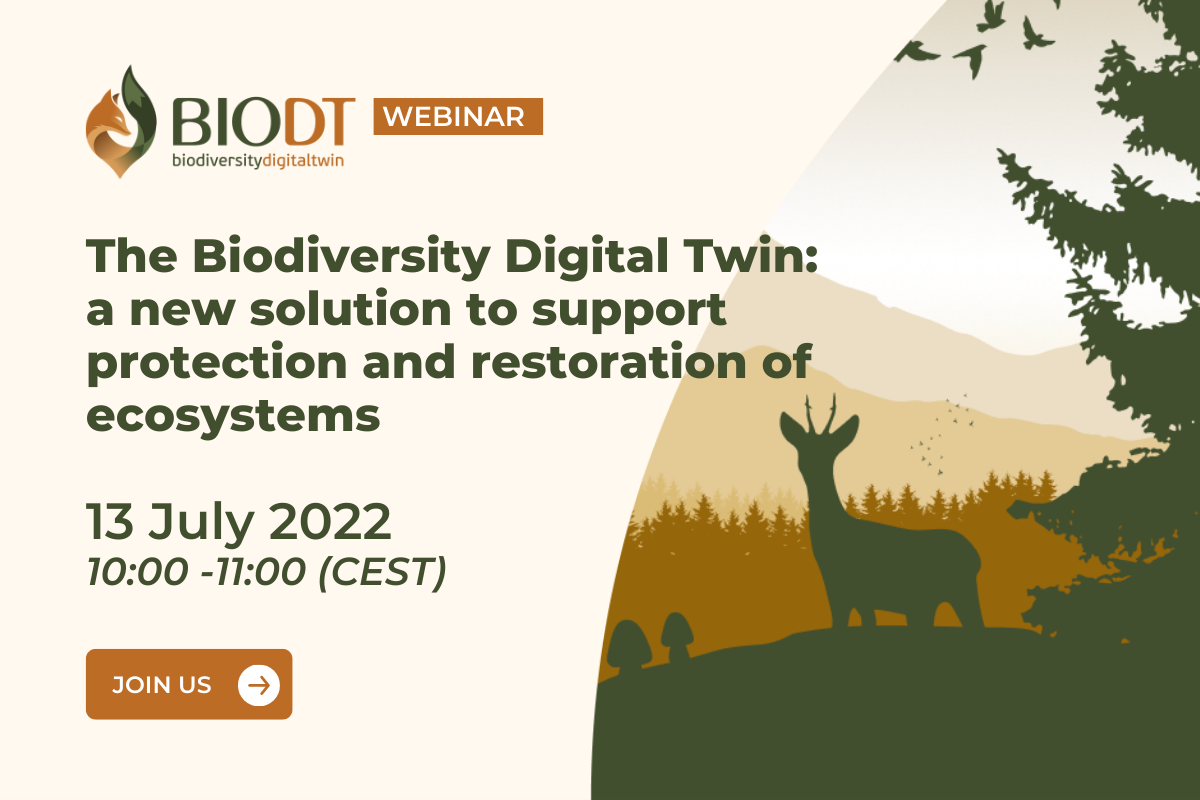
Background
Understanding the forces shaping biodiversity is needed for rational management of natural resources and also to meet the EU Biodiversity Strategy for 2030 to restore biodiversity in Europe. In particular, researchers need to be able to better predict global biodiversity dynamics and how species interact with their environment and with each other. This can be an extremely difficult task because the processes underlying biodiversity dynamics are complex. Innovative ways to combine data, models and interaction processes are required to predict these dynamics and offer solutions that promote a sustainable management of Earth’s biodiversity and its ecosystems.
In this context, the BioDT project aims to bring together a dynamic team of experts in biodiversity, High-Performance Computing, Artificial Intelligence, digital twinning and FAIR data to develop this Biodiversity Digital Twin prototype. This is going to be achieved through a cooperation between 22 partners that aim to push the current boundaries of predictive understanding of biodiversity dynamics by providing advanced modelling, simulation and prediction capabilities. By exploiting existing technologies and data from relevant research infrastructures in new ways, BioDT will be able to accurately and quantitatively model interactions between species and their environment.
About the webinar
The first BioDT webinar presents the project's objectives and goals, and its interaction with the LUMI Supercomputer, fundamental for building its modelling and simulation capabilities. The discussion will pave the way for the four BioDT use case groups and how their development can help scientists in predicting future trends in the biodiversity field.
The event gives also the opportunity to meet the people behind the project and to interact with them during a poll session and a panel discussion, focussed on analysing the role of biodiversity in the context of climate change and digital twins.
Agenda (all times CEST)
- 10:00 - 10:15: BioDT: a Digital Twin for advanced simulation, modelling and simulation capabilities - Jesse Harrison, BioDT project manager & Senior Data Scientist at CSC [slides]
- 10:15 - 10:25: High-Performance Computing as a means to support the Digital Twin: the Lumi Supercomputer - Aleksi Kallio, BioDT Digital Twin Technical Platform Leader and Development Manager at CSC [slides]
- 10:25 - 10:30: Interactive polls on menti.com
- 10:30 - 11:00: Panel discussion: Biodiversity in the context of climate change and digital twins: challenges and opportunities - Moderator Jeroen Broekhuijsen, BioDT Collaboration with strategic initiatives Leader and Team Lead Digital Twin at TNO
- Rita Bastos, Postdoctoral Researcher at CIBIO - Centro de Investigação em Biodiversidade e Recursos Genéticos
- Yvan le Bras, Chief Technical Officer at PNDB - National Infrastructure for Biodiversity Data
- Sara Garavelli, CSC, EOSC Association Director
- Thomas Geenen, ECMWF, Technology Partnership Leader at Destination Earth
- 11:00: Wrap-up and closure, Jesse Harrison, BioDT project manager & Senior Data Scientist at CSC